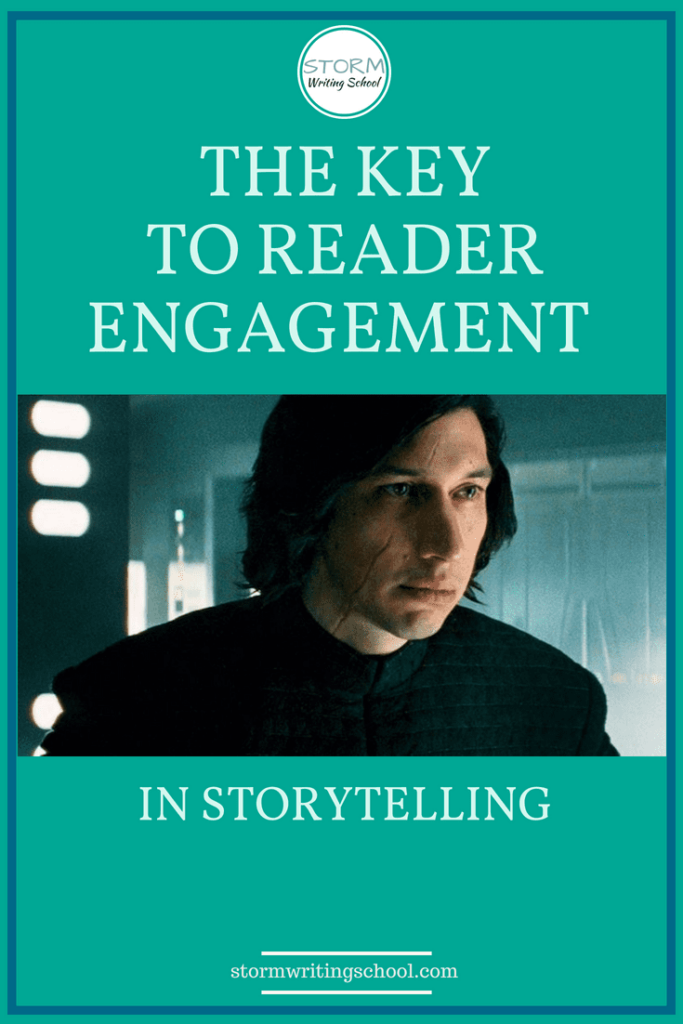Storytelling is a complex beast. There are lots of things that appeal to readers: poetic sentences, imaginative alternate realities, sympathetic and/or courageous characters, relatable problems, vicarious experience. But at the scene level, there is really just one simple concept that spurs the reader onward.
I used to work on a golf course on the grounds crew during the summers while I was in high school. In my first year, I was the low man on the totem pole, so I was usually stuck with the worst job: the weed-eater or weed-whacker.
I was sometimes paired with another low status worker; sometimes I had to do it alone. The job lasted all day: drive a cart to the tee, go up one side of every fairway and down the other. Most other jobs have a definitive, knowable number of tasks: tees, greens, sand traps—you know how many you have left, and, most importantly, you can count them, tick them off. But the tedium of counting the thousands of trees on the golf course would have done nothing to aid the tedium of the weed-eating job itself. And it was hard work, consisting of 8 hours of walking around with a 20 pound hunk of metal strapped to a shoulder harness.
Then there was the threat of the course superintendent, who would come around and inspect your work and yell at you if he found you were damaging any tree bark, since girdling can kill the tree. But it was almost impossible to avoid hitting the tree bark. The weed eater wire moves so fast it’s effectively invisible, so you can’t actually see the edge of your blade, so to speak.
What’s Missing?
Okay, so far, this story is not super compelling. Why?
It has action and conflict. But something is missing.
Now, what if I told you that one day in my third year, after I’d graduated to easier but more skilled labor at the golf course, I was charged with taking the new guy around the course, instructing him in the arts of weed eating. We were up in the southeast corner of the course, on a hill overlooking the 18th fairway. While the new guy trimmed around the perimeter of the curling club building, I tackled the tall grass growing under the short, young evergreens. Five minutes passed, and he came back around the building, looking troubled. I cut the engine on my weed eater and said, “What?” and he said, “I’ve got a problem.” He held up his hand to reveal a dark blood stain at the tips of his fingers.
Now, we’ve got a proper story on our hands. Why?
Think of it like this: the basic question motivating reader engagement is “What’s going to happen next?” But that question can vary in its urgency. Sometimes, you have mild curiosity; other times, you absolutely need to know. Under what circumstances do we want to know the answer more urgently?
My first thought about this was that it’s conditions of trouble or conflict that lead to a more urgent need to know what’s going to happen next. But conditions are not enough, as is demonstrated in my initial description of the challenges of weed-eating, which establishes the fact that weed-eating sucks.
The Key
The key is that we must anticipate change. Unless there’s potential for change, we’re not that concerned about answering the question, “What’s going to happen next?”
In my initial “story,” there was conflict or trouble, but no promise of change. You may note that the first story wasn’t actually about a specific incident; it was simply an explanation of weed-eating on a golf course grounds crew. It was, therefore, static. I could still screw things up by relaying a specific incident, however. Let’s say I had gone on to tell a story about repeatedly hit tree bark and then getting yelled at by the superintendent but suffering no real consequence for it. That story would not have been more compelling. There has to be a consequence, a potential for the scene’s actions changing the character and/or his situation.
Karl Ove Knausgaard was celebrated a few years ago for his six-volume memoir, My Struggle. James Wood, in the New Yorker, said of it, “There is something ceaselessly compelling about Knausgaard’s book: even when I was bored, I was interested.” That’s a pretty high commendation.
It’s also the way I felt about the book (his first volume, A Death in the Family, at least; I have yet to read the other five volumes). There were times when he went into such detail that I found myself (the writer in me) wondering why I was still so interested.
Looking back on it now, though, I can see that there was always a looming sense of transformation/change right around the corner. Even if the story at times seemed to lack so much of the other things that normally draw me in as a reader, it at least had that one key hook: the potential for change and consequence.
Potential
I don’t believe that actual change is really even necessary. Personally, I find it more fulfilling when there’s actual change, but have you seen the film Manchester by the Sea? Only read below if you’ve seen the film or don’t mind a spoiler.
[showhide type=”pressrelease” more_text=”Show” less_text=”Hide” hidden=”yes”]The protagonist, Lee Chandler, doesn’t actually change by the end. In fact, he says to his nephew, “I can’t beat it,” referring to his inability to overcome his depression and self-imposed isolation. Simply put, he doesn’t change. But there’s always a potential for change. And that’s what’s gripping.[/showhide]
The Application
So what does this mean for you?
At the global level of your story, it means writing toward a transformation, a shift. Even if your character doesn’t change much, his situation will. When you’re outlining your story (or, if you’re a drafter/pantser/discovery writer, after your first draft), you may want to begin with a clear idea of the final, resulting state of your character and his situation, then go back through the story’s major plot points and be sure that they’re moving us toward that shift in some way. There are several outlining methods that differentiate a plotting order from the story order. Eva Deverell’s One Page Novel, for instance, posits 8 stages for a novel. The story order is 1,2,3,4,5,6,7,8. But the plotting order is 8,1,5,2,3,4,7,6.
Some other things to consider for the global story:
- Reveal your character’s weaknesses (flaws, demons/ghosts of the past, fears) at various places. As John Truby says, Weakness X Action = Change.
- Have your character lose on occasion. When we understand the power of the antagonist and the stakes involved in the story, we’ll understand what the desire and conflict mean for the character.
- Keep in mind a character need, which differs from desire (desire is on the surface–the concrete objective of the character; need is below the surface–the abstract thing the character needs in order to be a better version of herself. At the start of the story, the character should not be aware of the need.)
What about at the scene level? One piece of advice I got a long time ago from a writer named Ann Hood was to think about moving a scene from a positive valence to a negative valence or from a negative valence to a positive valence. Ann said that approach was a total game-changer for her. And I recently came across some very similar advice from Shawn Coyne at Story Grid:
At its most basic, a scene starts one place and ends another. It starts with a positive (man meets woman of his dreams) and ends with a negative (woman rejects man’s advances). Or it starts with a negative (rejected man calls his best friend for consolation) and ends with a positive (friend convinces rejected man to get a dog and try again). It can also begin negative and end double negative (someone falls…and then gets hit by a car) or positive and end double positive (man wins a hand of blackjack, puts it all on a number at roulette table and wins big).
So apart from your being sure to have scenes that speak to the above list of things to consider for the global story, it helps to think about always moving the valence of the scene one way or another. That way, you’ll ensure a dynamic story in which change is the norm.
Again, in the larger scope of the story, you can have a character who doesn’t ultimately change. It may be a little less satisfying for the reader, but you can pull it off. What you can’t forsake is the potential for change.
- Check out other recent articles I’ve written on Why You Need Strong Antagonists in Your Story and Problems vs. Obstacles.
- The Tension Lab course is currently live. If you’re looking for some tips on how to create mystery, suspense, and dramatic irony in your stories, take a look at the course page.
- Follow me on Facebook and Pinterest.
- Subscribe to the newsletter for alerts to biweekly articles, new classes, and the occasional free gift for subscribers.









9 Responses
I read about the +/- thing in Robert McKee’s “Story” and from this post I finally understand why to pay attention to that. Thanks!
I’m so glad this helps the concept come together for you. Thanks, Christine!